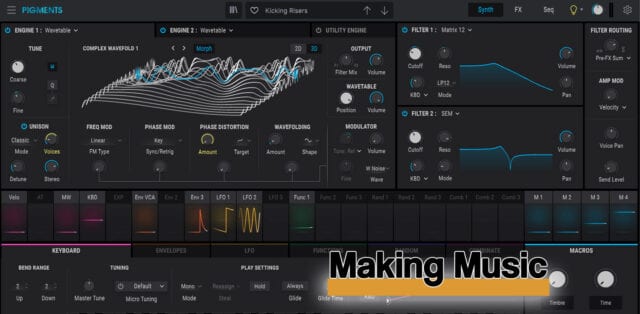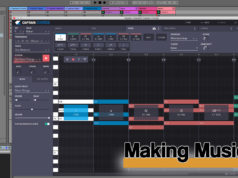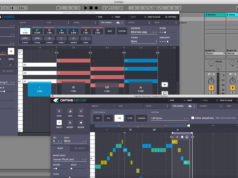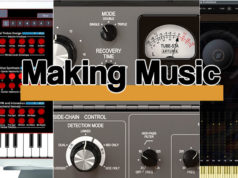Last Updated on April 3, 2022 by Andrew Culture
Is this just another Arturia Pigments review? Not really…
Developing as a musician is a curious phenomenon. In theory, the fundamentals of music theory can be broken down into a set of rules that are quite mechanical and mathematical. But if we’re all playing by the same set of rules how are we creating such a vast spectrum of music? How, for example, can a hip-hop producer look at a particular instrument and use it for bowel-shaking bass, while a soundtrack composer uses the exact same instrument to emphasise tension in a scene. Inspiration is probably the answer to both questions, so can inspiration be bought?
I expect you are reading this review because you want to learn more about Arturia Pigments 3, and you need not worry because that is what you will get. But we’re going to look at what this instrument might do for you as an instrument of inspiration, rather than list technical specifications.
I decided against listing all the technical specifications for Pigments – Arturia do a thorough job of listing tech specs on their website. Look here…
In fact, I can probably sum up the question of specifications by saying that if there’s something sonic you want, then you’ll probably find it in Pigments. I was going to add a list of caveats about some wilder requirements not being present in this soft-synth, but in reality, Pigments is plenty full of weirdness. But the stranger side of sound mangling doesn’t detract from the overall solid brilliance of this soft synth. Pigments is like a reliable friend who will always support you, love you dearly, has your back in a fight, but happens to also like mayonnaise on cornflakes.
The complex simplicity of Pigments
Pigments 3 isn’t the only ‘do it all’ soft synth package on the market, so what marks it out as different? Simplicity. Pigments has a very shallow learning curve. The interface just makes sense on so many levels. Regardless of how knowledgeable you are about synthesis I wholly believe that you’ll feel at home as soon as you load Pigments.
The Pigments interface is split into three main tabs; Synth, FX and Seq. The main section of the software changes but remains consistent throughout. I found it very hard to get lost while using Pigments, and that’s impressive.
Magic tabs and kissing god
The synth tab has the controls you might expect to find on a hardware synthesizer front and centre, subtly surrounded by an array of ‘fine detail’ controls and (depending on what sound journey you are on) a whole collection of ‘fun stuff’.
The synth tab is split up into three main ‘engines’, each accessible via its own tab. This includes the new ‘utility engine’. I feel I’m abandoning my duty as a reviewer by not describing every aspect of the utility engine, but while the controls are few, the possibilities are incalculably vast. Trying to describe the joy of the utility engine would also be like giving someone the spoilers for a film they’re are about to watch. Or trying to describe what a deeply personal experience like losing your virginity feels like.
The Utility Engine is a playground where madmen become angels and where even the most mild-mannered and gentle sonic explorer can kiss god.

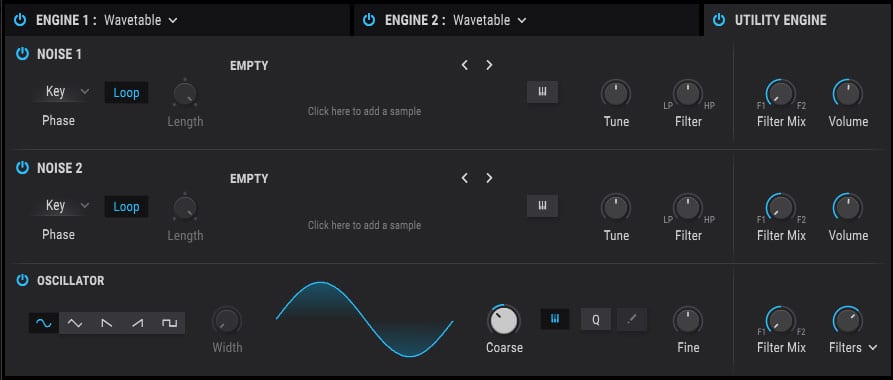
The effects and sequencer tabs offer up more opportunities for travel than every airport on earth, and yet don’t need a warehouse full of Ordnance Survey maps or a team of Sherpas to navigate. This summarises the brilliance of Pigments. You can get what you need very simply on the ‘surface’ interface, but this is only a gateway drug. The deeper you dig, the more you’ll find, and the deeper in love you will fall.

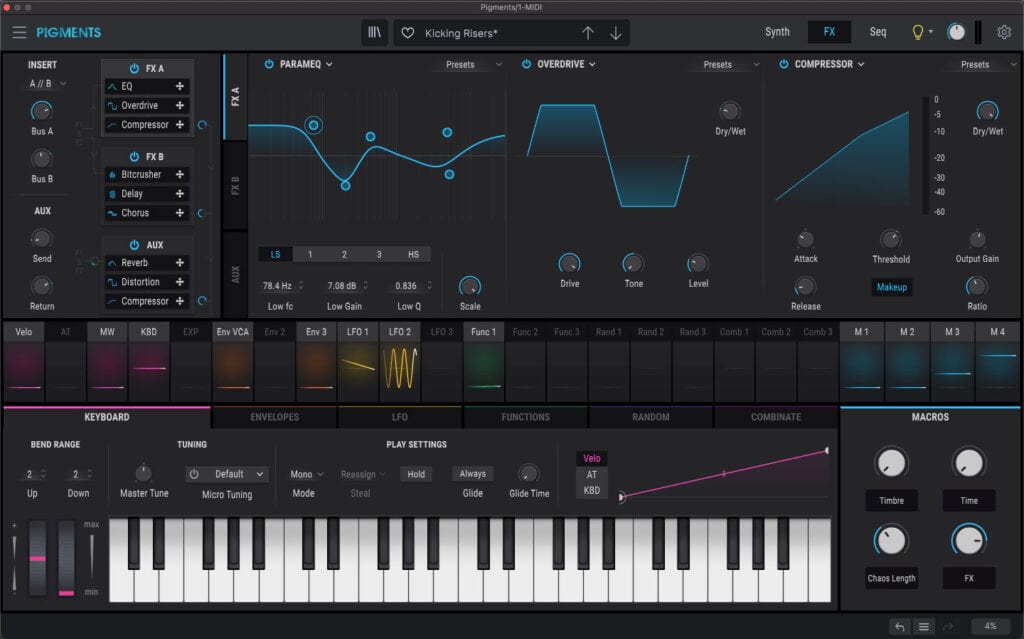
The more you explore, the more alive and almost sentient Pigments becomes. The many, many ways you can route and manipulate patches brings the beast to life in a way I’m not sure I’ve experienced since falling in love with Swarms by Spitfire Audio. Pigments breathes and swells in a similar way to Swarms, it’s organic, controlled and alive!


Arturia Pigments 3 – a (rather long) Conclusion.
I have reviewed (and regularly used) many other huge software synths, but I always felt outsmarted by them. Scratching below the surface can sometimes be a bewildering ordeal. If your experimentation results in a happy accident then great, if not then, it’s time to get the manual out. As an aside, saving presets in Pigments is very easy
Simply having options to do everything is not a pleasurable experience by default. I remember the first time I used the Internet a friend told me that it had ‘everything’, and I was paralysed by choice. Pigments is a vast cathedral of opportunity, but it’s more like a Tardis of sound than a labyrinth of chaos.
Over recent years there have been several occasions where roadtesting a new instrument made me want to forgo everything else in my life for a few hours, just to revel in the joy of exploration. Most recently this joy was inspired by the Sequential Circuits Rev2, The Moog Subharmonicon and the Arturia Microfreak. Pigments 3 costs considerably less than any of those instruments, and I get the feeling it’s going to be more central to my musical life than any of them.
The presets that come shipped with Pigments 3 are wonderful, but I also recommend diving face-first into the range of sound packs that Arturia make available via their website. There are plenty of jumping in points with Pigments, and a billion reasons to create something utterly unique. But are the sounds usable? You’d better believe they are. For the purposes of getting to know Pigments well enough to write this review, I charged around it in a berserk fashion befitting of the deadline I was under to get this review published. And yet I feel like I already know Pigments like it’s a well-educated, supporting and nurturing friend.
This review is not a love letter to Arturia, although I’m yet to find an Arturia product I dislike, the buoyant nature of this review is a reflection of how the software made me feel. And buying anything musical is not as logical as any of us may like to fool ourselves that it is. Feel is everything, and Pigments feels great.
One problem though, I released a new album recently and I can’t stop thinking about how much better some of the tracks would have been if I’d used Arturia Pigments. Shit.



